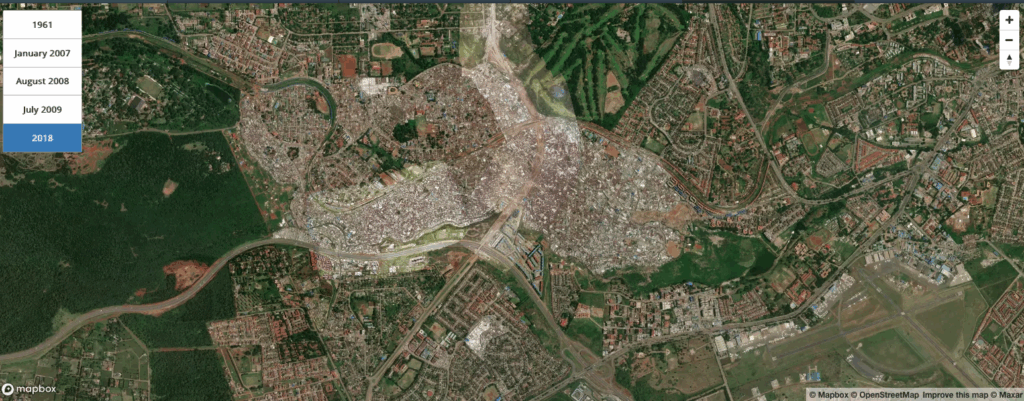There is a great deal that city leaders can gain from using data to better understand the violence happening in their own cities, and to take action to prevent it. Before getting into the why and how, however, it is first important to acknowledge that violence is a pervasive issue in many cities around the world. Violence is not an issue exclusive to the Global North or Global South, to certain regions, or demographics. In fact the vast majority of violence occurs beyond the battlefields, in our homes and in our streets. Most recent data indicates that over 80 percent of all violent deaths happens outside of conflict,[1] and with more than half of the population living in urban areas (a number that is projected to increase to 68 percent by 2050), it is safe to say that the majority of violence is happening in cities around the world.
Nevertheless, it is equally important to understand that violence is hyper-localized. The profile of violence, the people most affected by it, the risk factors at play, and what will work to prevent it—this changes from city to city, neighborhood to neighborhood, and street to street. 50 percent of crimes in Latin America happen in only 2 percent of streets, and this trend holds true even when looking within cities. For example, in Seattle, United States, 50 percent of all crimes happen in only 5 percent of the streets.
That is why local leaders and those whose work is deeply embedded in their communities are the ones best poised to prevent and reduce violence. These efforts need to start with a precise and nuanced understanding of the types of violence that are affecting specific communities and neighborhoods, which city leaders have gained through both their work and lived experiences. Still, while this knowledge of the city and its dynamics is invaluable and irreplicable, city leaders should also use data to supplement and improve their own understanding of violence in their cities—and the risk and protective factors at play. Here are a few ways data can support city leaders in their decision-making:
- Improving early-warning capabilities: Data is a crucial tool in spotting trends and predicting violence. This empowers policymakers to establish early-warning systems and take anticipatory action, allowing them to break the cycles of violence by acting on it before it takes place.
- Creating a web of knowledge: Data allows practitioners and decision-makers to draw parallels, find similarities, and learn from the failures and successes of other cities. By finding these connections across cities and national contexts, data lets us build upon what has already been done, and replicate and adapt solutions.
- Checking biases and preconceptions: Correlation does not equal causation, and anecdotal knowledge can inadvertently lead us astray. It is crucial to check assumptions on violence and its risk factors against the data to ensure that policies are not replicating existing troublesome dynamics. That said, data itself can be biased, both in its collection and in its analysis, so it is important to ensure that there are systems in place to prevent cities from falling into this trap.
All of these points come together to mean that data can aid policymakers in being more fair, equitable, and efficient with resource allocation for violence prevention. With that said, there is no lack of sources that make the case for why cities should rely on data and evidence-based solutions to address the violence that affects their communities. What is often missing is practical guidance on what that looks like, and what steps they can take to make the best use of the data they have available—or, in the case of cities that do not have substantial data—how they can source and produce this data.
Where resources are scarce and there aren’t well-established protocols for data collection and analysis, this intersection is exactly where there is a need to find creative and effective solutions to empower cities to use data in their policymaking. One pathway that city leaders should consider turning to is to partner with local communities to produce hyper-local data from the bottom-up.[2]
A great example of such an initiative is Map Kibera, in Nairobi, Kenya. The project started when a group of young people living in Kibera, one of the major informal settlements in Nairobi, realized that their community was not catalogued in official mappings or statistics of the city. They took it upon themselves to walk through the area and start to manually map the community. From there, the project evolved into a digital map, keeping record of security services, broken lights, dangerous locations, and more. They then used this information to collaborate with local authorities and policymakers to target service provision in the area and support violence prevention efforts. In addition to that, they have developed an SMS reporting system, and a citizen journalism platform to help residents report issues in the area.

Photo: Screenshot of Map Kibera’s Open Street Map.
On the other side of the spectrum, there are cases of cities that have an abundance of data but are unsure how to more effectively use that to support their violence prevention efforts. Platforms such as Safe Cities can be an invaluable tool for those cities. Developed by the Inter-American Development Bank (IDB), this is a digital platform that provides cities with a comprehensive framework to identify the root causes of crime and violence-related problems, as well as tools to design, prioritize, and implement effective solutions to address its most pressing challenges. The platform integrates disperse data from several relevant departments within the municipality, and processes it through intelligent algorithms, to provide cities with a diagnostics that allows decision-makers to identify the most pressing crime- and violence-related problems, ascertain its main determinants, and select relevant evidence-based solutions from a database of relevant policies.
These initiatives illustrate how cities can overcome some of the main challenges involved in using data for violence prevention. Be it for a lack of existing data systems, or for a lack of systems in place to aggregate and make use of the data already available, cities often struggle to answer the calls for better embedding data in the design and implementation of their policies. When this happens, it is important to remember that violence prevention is a whole-of-government and a whole-of-society matter, and that cities should lean in on partners at different levels—from community-based to international organizations—that can support them in these efforts. Peace in Our Cities and other similar networks should also be seen as reliable partners in this, supporting cities in connecting to the knowledge and resources they need to go from words to action.
For cities and civil society organizations interested in learning more about the Safe Cities platform, PiOC is organizing a webinar, in partnership with the IDB, to showcase its functionalities and explain how cities can adopt it. Register here to attend the event.
To learn more about Map Kibera and other initiatives that are leveraging the power of data and technology to advance violence prevention in cities, read the report from the PiOC Africa Regional Meeting. This regionally-focused workshop brought together PiOC member cities and experts for knowledge exchange and experiential learning on topics related to gender-based violence, youth, data and technology, climate change, and organized crime in the unique context of Africa’s rapid urbanization and social change.
[1] It is important to note that this data is from 2021, and since then, the world has witnessed a highly unusual sharp rise in the number of conflict-related deaths, although estimates still indicate the violence outside of conflict zones comprises the majority of global violence.
[2] In these cases, it is crucial that cities approach data collection with clear ethical guidelines. In contexts where formal protocols are lacking, it is crucial that any engagement with community-generated data prioritize informed consent, data privacy, and transparency, ensuring that residents retain agency over how their information is used.



